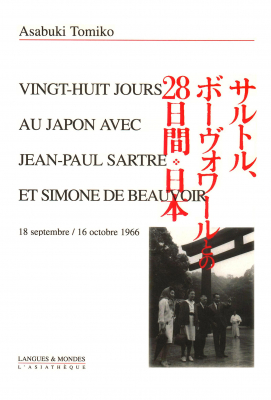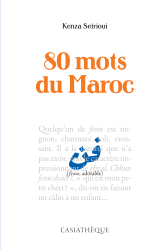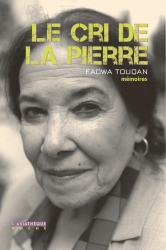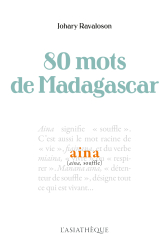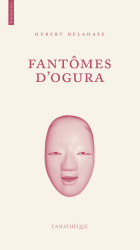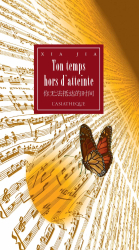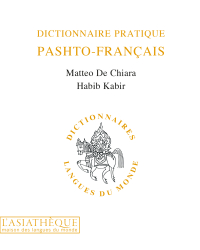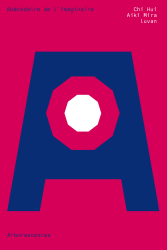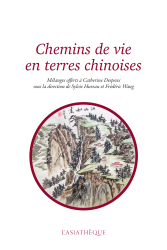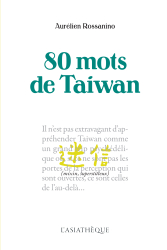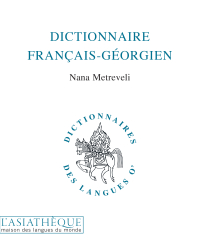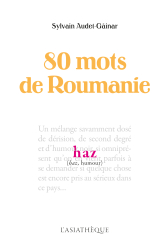Details
Format: Paperback
ISBN: 9782911053115
Collection: Connaître le Japon
16 x 24 cm
Weight: 258 gr
Pages: 160
First publication: 25/11/1996
CLIL: 3640
BISAC: TRV003050
28 jours au japon avec Jean-Paul Sartre et Simone de Beauvoir
18 septembre/16 octobre 1966
Translation: Claude Peronny, Chiaru Tanaka
Preface : Hélène Beauvoir (de), Richard Chambon
Tracing the footsteps of the philosopher couple in Japan in 1966
The autumn of 1966 was a time overshadowed by the American intervention in Vietnam, but it also witnessed Jean-Paul Sartre and Simone de Beauvoir's journey to Japan. During that period of existentialist reckoning, Japanese women striving for female emancipation found a role model in Simone de Beauvoir, both envied and admired. This book retraces day by day the discoveries made by the two writers during their time in Japan, including not only their visits to monuments and the sites, but also their observation of the daily life of the Japanese people, their pleasures, and their chores. One of the most defining moments of their trip was their visit to Hiroshima, from which both returned overwhelmed. Forty-five photos illustrate the account, a version of which was also published in Japan in 1995 by Dohosha Publishing. Asabuki Tomiko has reviewed and expanded the text for the French audience. Also included in this volume is an essay by Ebisaka Takeshi on Sartre's influence in Japan, as well as a substantial bibliography illustrating the profound impact of this visit.
PRESS REVIEW
La Nausée et le poisson cru
« ... la grande affaire littéraire de la vie d'Asabuki Tomiko, c'est cette amitié avec Jean-Paul Sartre et Simone De Beauvoir, cette admiration plutôt, cette fidélité racontée dans le livre par le menu ... »
Sartre et Beauvoir au Japon
« ... Le livre, en effet, regorge d'anecdotes curieuses, souvent drôles, qui traduisent l'étonnement, ou l'empathie, que les Japonais mis en face de Sartre et Beauvoir ont pu éprouver, à l'égard de certains de leurs faits, gestes ou paroles. Ainsi, à plusieurs reprises, l'élégance, le goût des couleurs et de l'harmonie ou la beauté de Simone de Beauvoir sont mis en avant dans le texte ... »
CONTRIBUTORS' BIOGRAPHIES
Asabuki Tomiko
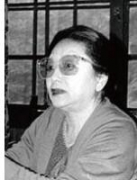
Asabuki Tomiko, born February 27, 1917 in Tokyo and died September 2, 2005, is a writer and translator. She belongs to a family originally from Kyûshu who played an active role in the birth of modern Japan during the Meiji Restoration. Coming to France at a very young age to study there, she returned in Japan in the 1950s and has since shared her time between the two countries. Sartre said that she was both "France seen from Japan and Japan seen from France". Her moving tribute to Sartre and Beauvoir, with whom she had close ties of friendship, is symbolic of the spirit of exchange and fulfilling encounters that L'Asiathèque wants to promote.
Hélène Beauvoir (de)

Hélène Bertrand de Beauvoir (born June 6, 1910 in Paris and died July 1, 2001 in Goxwiller) is a painter and the younger sister of Simone de Beauvoir. In 1936, she was 25 years old and had her first exhibition in Paris, Galerie Bonjean, rue d'Argenson. Pablo Picasso says when he sees his paintings that his painting is original. Critics greet him with sympathy and note a strong influence of museums in the major works in the exhibition. Before her sister, who has yet to publish her first book, her art is recognized by her peers.
TABLE OF CONTENTS
Préface, Richard Cambon (Preface by Richard Cambon)
Témoignage, Hélène de Beauvoir (Testimony by Hélène de Beauvoir)
Avant-propos (Foreword)
L'arrivée de Sartre et de Beauvoir (The Arrival of Sartre and Beauvoir)
Premières conférences au Japon (First Lectures in Japan)
Amour, mariage et sexualité (Love, Marriage and Sexuality)
Nouvelles conférences et réactions des intellectuels (New Lectures and the Reactions of Intellectuals)
L'égalité parfaite (The Perfect Equality)
Excursions autour de Tokyo (Excursions around Tokyo)
Le voyage à Kyoto (The Journey to Kyoto)
D'Osaka à Kobe (From Osaka to Kobe)
Kyushu
Hiroshima
De nouveau à Tokyo (Back in Tokyo)
Dialogue avec des sartriens japonais (In Conversation with Japanese "Sartriens")
Trente-sixième "anniversaire de mariage" (Thirty-Sixth "Wedding Anniversary")
Retour en France (Return to France)
Epilogue
Sartre au Japon, Ebisaka Takeshi (Sartre in Japan, by Ebisaka Takeshi)
Beauvoir et les femmes japonais, Asabuki Tomiko (Japanese Women and Beauvoir, by Asabuki Tomiko)
Glossaire (Glossary)
Bibliographie (Bibliography)
